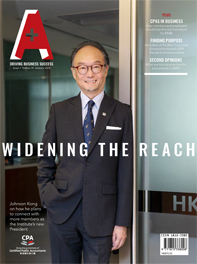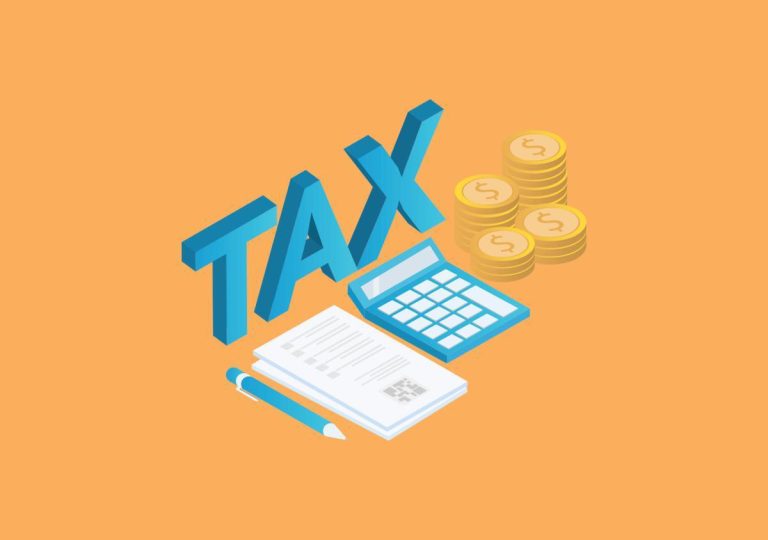The case of Commissioner of Inland Revenue v. Poon Cho-ming John [FACV 1/2019] hinged on the fact that the payment for “something else” was essentially for the employee agreeing: not to take any course of action that might create unfavourable publicity for the employer; not to pursue threatened legal claims against the employer; and to simply “go away quietly.”
Brief facts
Under an employment contract dated 20 October 1999 (the service agreement), the taxpayer was employed by a Bermuda company (the company), which was listed on the Stock Exchange of Hong Kong, as group chief financial officer (group CFO) and an executive director of the company. The service agreement was terminable by either party serving to the other a 6-month written notice.
Circumstances leading to the immediate termination of the service agreement on 20 July 2008
On Friday afternoon, 18 July 2008, the chairman of the company informed the taxpayer that the company was going to terminate the service agreement immediately and remove him from his directorship positions of the group, including that of the company.
The taxpayer was taken aback. His mood was combative, and he refused to go quietly. The taxpayer was of the view that even though the company could terminate his employment as group CFO, this was not the case with his position as executive director of the company and other group companies.
The taxpayer then threatened to take a two-pronged course of action. Firstly, he proposed to challenge the chairman’s plans to remove him from his directorships by taking the matter to the shareholders with a view to delay his departure from the board, contrary to the wishes of the chairman and a majority of the company’s board of directors. Secondly, the taxpayer was also prepared to take his claims to court, which would attract interest from the media, with consequential market reaction.
Although the parties were in an acrimonious relationship, after a weekend of negotiations involving lawyers on both sides, they eventually agreed to the terms for the termination of the service agreement, by way of a separate written agreement (the separation agreement).
Payments and benefits made to the taxpayer under the separation agreement
Under the separation agreement, the taxpayer was to be paid, in addition to payment in lieu of six months’ notice and various other sums, a “payment in lieu of a discretionary bonus for the financial year ended 30 June 2008 – EUR 500,000” (sum D).
Furthermore, the separation agreement also provided that the vesting dates in respect of three tranches of options in the shares of the company, which were granted to the taxpayer under his terms of employment, were accelerated to the date of the termination of the service agreement on 20 July 2008. These options were duly exercised by the taxpayer resulting in notional gains of HK$43,250,400, calculated for tax purposes as being the difference between the market value of the shares on the date of exercise and the exercise price (the share option gain).
The taxpayer accepted that the sums and benefits to be given to him under the separation agreement were in full and final settlement of all claims and rights of action (whether under statute, common law or otherwise).
Issue in dispute
The Commissioner of the Inland Revenue (CIR) determined that sum D and the share option gain were “income from employment” chargeable to Salaries Tax in Hong Kong.
On appeal, the tax tribunal of the Board of Review (BOR) and the Court of First Instance (CFI) upheld the CIR’s assessment of sum D and the share option gain. The Court of Appeal (CoA) however reversed the BOR’s and CFI’s decision and held that both sum D and the share option gain were not chargeable to Salaries Tax in Hong Kong.
The CIR then appealed the CoA’s decision to the Court of Final Appeal (CFA).
Decision of the Court of Final Appeal
Legal test for determining what constitutes “income from employment”
In this regard, Mr. Justice Bokhary NPJ, delivering his judgement in this case, referred to an earlier decision of the CFA held in Fuchs v. CIR (2011) 14 HKCFAR 74. In Fuchs, Ribeiro PJ stated that (and all other CFA judges on that panel agreed):
“…Income chargeable [under section 8(1) of the Inland Revenue Ordinance] … embraces payments made… ‘in return for acting as or being an employee,’ or… ‘as a reward for past services or as an inducement to enter into employment and provide future services.’ If a payment, viewed as a matter of substance and not merely form…is found to be derived from the taxpayer’s employment in the abovementioned sense, it is assessable…”
“It is worth emphasizing that a payment which one concludes is ‘for something else’ and thus not assessable, must be a payment which does not come within the test…”
“In situations [where taxpayers claimed that the payment fell outside the charge because it was not made in return for their acting as or being an employee but as a consideration for abrogating their rights under the contract of employment]… such a conclusion may be reached where the payment is not made pursuant to any entitlement under the employment contract but is made in consideration of the employee agreeing to surrender or forgo his pre-existing contractual rights…”
Sum D and the acceleration of the vesting dates of the relevant options were given to the taxpayer “for something else”, and therefore were not income from employment chargeable to tax
Applying the above legal test to the facts and evidence of this case, Mr. Justice Bokhary NPJ held that (and all other CFA judges on the panel agreed) both sum D and the acceleration of the vesting dates of the relevant options leading to the share option gain were “not given to reward the taxpayer for past services. [Sum D and the share option gain] were plainly given for something else, being part of what was given to make the taxpayer go away quietly. In so far as it may be appropriate to approach the present case by reference to abrogation, it is to be observed that the separation agreement abrogated whatever rights the taxpayer may have had under his contract of employment and that he acquiesced in such abrogation in return for what was given to him to make him go away quietly…”
As such, and essentially endorsing the reasons given by the CoA for its decision, the CFA upheld the CoA’s decision that both sum D and the share option gain were not chargeable to Salaries Tax in Hong Kong.
Before making the above conclusion, Mr. Justice Bokhary NPJ had considered but rejected the CIR’s argument for the taxability of sum D and the share option gain on the following grounds.
Rejection of sum D being taxable under the substitution test
Counsel for the CIR argued that sum D, being “in lieu of a discretionary bonus” was taxable under the “substitution test” as explained by Lord Woolf in Mairs v. Haughey [1994] 1 AC 303.
Counsel argued that “[t]he payment of a sum [i.e., sum D] in true substitution of another [i.e., a discretionary bonus which the taxpayer would have received if the service agreement had not been terminated] is an acknowledgement and takes the place of, and has the same nature as, the latter [i.e., the discretionary bonus].” In other words, the nature of sum D should be the same as the discretionary bonus which would otherwise have been taxable had it been received by the taxpayer.
Rejecting Counsel’s argument on the point, Mr. Justice Bokhary NPJ considered that sum D was paid “in lieu of a discretionary bonus” only in form but not in substance. As such, sum D was not paid in true substitution of a discretionary bonus and, thus, the “substitution test” did not apply.
Looking at the substance of sum D, Mr. Justice Bokhary NPJ noted there was no evidence that the financial results of the company for the year ended 30 June 2008 were considered in determining the amount of sum D. Nor was the work performance of the taxpayer for the year considered. These two factors were normally the substance when a discretionary bonus was considered and awarded.
Instead, the evidence was that the company told the Inland Revenue Department that: (i) the taxpayer was not awarded any bonus for the financial year ended 30 June 2008; (ii) Sum D was an “entirely arbitrary amount mutually agreed by the taxpayer and the chairman; and (iii) Sum D was paid to “eliminate any claim for unpaid bonus.”
Rejection of the share option gain being taxable on grounds that the options were granted while employed
Rejecting Counsel’s argument on this point, Mr. Justice Bokhary NPJ noted that the “acceleration in question was not acceleration of the time when the taxpayer would receive something which he would receive, albeit later, even without any acceleration. It was acceleration without which he would never have received that thing at all [i.e., the options would otherwise lapse if the acceleration was not made]. On the evidence and the facts found, it is plain that the acceleration of the vesting leading to the share option gain was not given to reward the taxpayer for past services. It was, on the evidence and the facts found, plainly given for something else…”
Commentary
It is of note that both the BOR and all level of courts adopted the same legal test quoted above for determining whether sum D and the share option gain were income from employment.
However, when applying the legal test to the facts and evidence of the case as found, the BOR and the CFI held that sum D and the share option gain could not be said to be paid “for something else” other than past services of the taxpayer.
This is apparently because both the BOR and CFI did not consider the taxpayer had any valid claims against the employer under his employment contract.
Specifically, both the BOR and CFI considered that given that the company had already separately made a payment in lieu of six months’ notice to the taxpayer, the service agreement was lawfully terminated by the company without the company breaching any terms of the service agreement.
Furthermore, both the BOR and CFI also considered that, under the terms of his employment, the taxpayer was obliged to resign from the directorships of the group upon the termination of the employment. The BOR had also earlier rejected the taxpayer’s claim that he had a right to put the removal of his directorships of the group to the vote of the shareholders of the company under the relevant Bermuda legislation or the by-laws of the company.
Based on the above, both the BOR and the CFI did not consider that the taxpayer had abrogated or surrendered any rights under the service agreement. Viewing the matter in this light, apparently both the BOR and the CFI did not consider that the taxpayer’s threatened two-pronged course of action against the company amounted to much of “something”.
The CoA and the CFA, however, viewed the matter differently, considering that the taxpayer dropping his threatened two-pronged course of action against the company, and agreeing to go away quietly, did amount to quite “something”.
Interestingly, Mr. Justice Bokhary NPJ also noted in his CFA judgement in the case that as “to claims and rights of action under statute, there was the possibility of a remedy available to the taxpayer under the Employment Ordinance (Cap. 57) if there was no valid reason for his termination”. That may also explain why Mr. Justice Bokhary NPJ also tried to reconcile the “for something else” line of reasoning with the reference to that of “abrogation.”
As illustrated in this case, the application of the legal principles for determining the taxability of payments or benefits given upon termination of employment is by its nature complicated. Furthermore, the terms and evidence of how termination payments or benefits were negotiated and agreed between the employer and the employee had a bearing in determining the taxability of such payments or benefits. Where necessary, employers and employees should seek professional tax advice.
This article is contributed by Tracy Ho, Asia-Pacific Business Tax Services Leader at EY; Patrick Kwong, Executive Director, and Kathy Kun, Senior Manager, of Ernst & Young Tax Services Limited.















